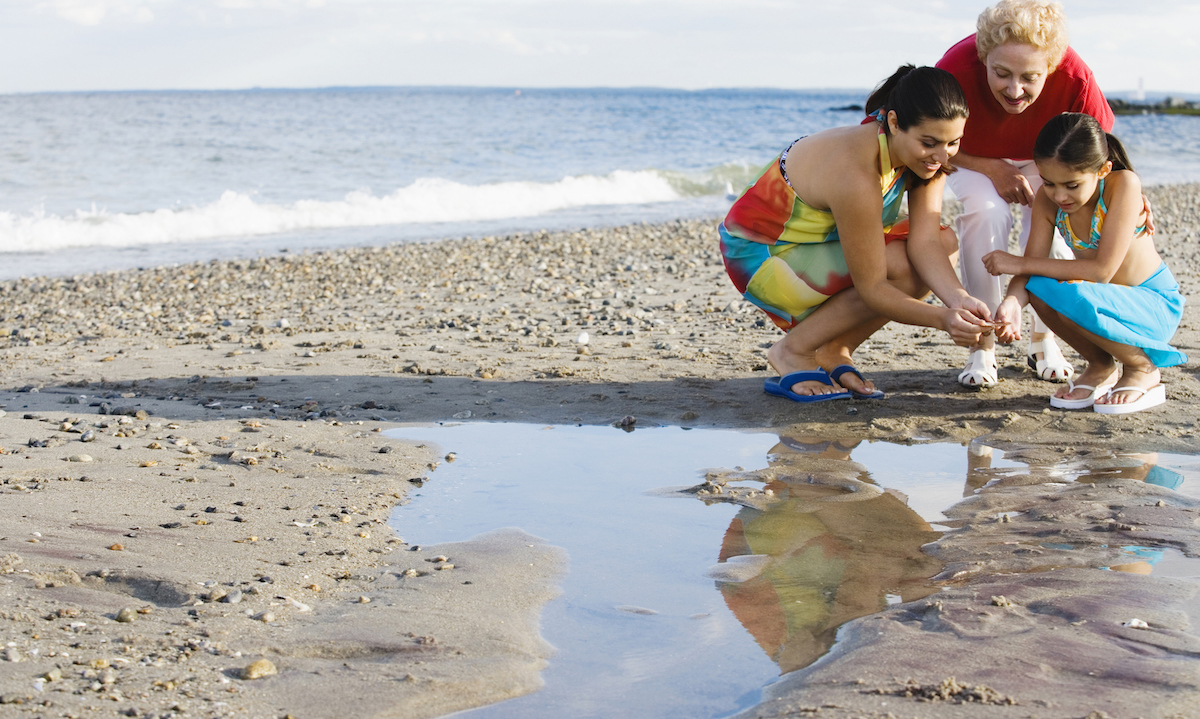<< Back
Smart Summer Fashion: Does a Dark (or Wet) T-Shirt Offer Better Protection Against Ultraviolet Rays?

June 29, 2021
A heat advisory remains in effect through Wednesday (June 30), with the heat index — the combined effects of heat and humidity — approaching 105 degrees, according to the state Department of Emergency Services and Protection. These conditions can cause heat exhaustion or heat stroke for anyone working outdoors. The elderly, children and those with respiratory conditions are also vulnerable. The heat wave is expected to end Thursday.
The sun’s ultraviolet (UV) rays are strong, particularly during the summer months. According to the Centers for Disease Control and Prevention (CDC), UV rays can damage your skin in as little as 15 minutes.
“With the summer starting, it’s important for people to check their skin regularly for anything that looks like it’s changed shape, color or size,” says Dr. Dean George, a cutaneous melanoma specialist and part of the team at the Hartford HealthCare Cancer Institute’s new Melanoma and Skin Cancer Center. “Bring concerns to your primary care provider or dermatologist. And we are now here if the situation is advanced and more serious.”
Here are the CDC‘s recommendations for helping to protect yourself and your family from skin damage this summer:
Clothing
When possible, long-sleeved shirts and long pants and skirts can provide protection from UV rays. Clothes made from tightly woven fabric offer the best protection. A wet T-shirt offers much less UV protection than a dry one, and darker colors may offer more protection than lighter colors. Some clothing certified under international standards comes with information on its ultraviolet protection factor.
If wearing this type of clothing isn’t practical, at least try to wear a T-shirt or a beach cover-up. Keep in mind that a typical T-shirt has a sun protection factor (SPF) rating lower than 15, so use other types of protection as well.
Hat
For the most protection, wear a hat with a brim all the way around that shades your face, ears, and the back of your neck. A tightly woven fabric, such as canvas, works best to protect your skin from UV rays. Avoid straw hats with holes that let sunlight through. A darker hat may offer more UV protection.
If you wear a baseball cap, you should also protect your ears and the back of your neck by wearing clothing that covers those areas, using a broad spectrum sunscreen with at least SPF 15, or by staying in the shade.
Sunglasses
Sunglasses protect your eyes from UV rays and reduce the risk of cataracts. They also protect the tender skin around your eyes from sun exposure.
Sunglasses that block both UVA and UVB rays offer the best protection. Most sunglasses sold in the United States, regardless of cost, meet this standard. Wrap-around sunglasses work best because they block UV rays from sneaking in from the side.
Shade
You can reduce your risk of skin damage and skin cancer by seeking shade under an umbrella, tree, or other shelter before you need relief from the sun. Your best bet to protect your skin is to use sunscreen or wear protective clothing when you’re outside — even when you’re in the shade.
Sunscreen
Put on broad spectrum sunscreen with at least SPF 15 before you go outside, even on slightly cloudy or cool days. Don’t forget to put a thick layer on all parts of exposed skin. Get help for hard-to-reach places like your back. And remember, sunscreen works best when combined with other options to prevent UV damage.
[huge_it_gallery id=”46″]
How Sunscreen Works
Most sunscreen products work by absorbing, reflecting, or scattering sunlight. They contain chemicals that interact with the skin to protect it from UV rays. All products do not have the same ingredients; if your skin reacts badly to one product, try another one or call a doctor. Here are a few things to consider when shopping for, and using, sunscreen:
- SPF: Sunscreens are assigned a sun protection factor (SPF) number that rates their effectiveness in blocking UV rays. Higher numbers indicate more protection. You should use a broad spectrum sunscreen with at least SPF 15.
- Reapplication: Sunscreen wears off. Put it on again if you stay out in the sun for more than two hours and after swimming, sweating, or toweling off.
- Expiration date: Check the sunscreen’s expiration date. Sunscreen without an expiration date has a shelf life of no more than three years, but its shelf life is shorter if it has been exposed to high temperatures.
- Cosmetics: Some makeup and lip balms contain some of the same chemicals used in sunscreens. If they do not have at least SPF 15, don’t use them by themselves.